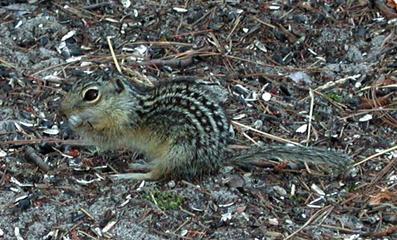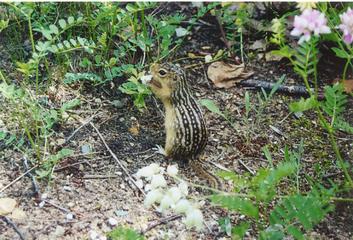Habitat
Spermophilus tridecemlineatus inhabits grasslands or prairies avoiding wooded areas. The squirrels originally were localized within the Great Plains region but have extended their range North and East of the plains due to the clearing of forested land to establish pastures in the last two centuries. Mountain ranges, the Appalachians and Rockies, have prevented further inhabitation to the east and west. Presence of the squirrels can be found in both Canada and the United States including Alberta, Arizona, Arkansas, Colorado, Illinois, Indiana, Iowa, Kansas, Manitoba, Michigan, Minnesota, Missouri, Montana, Nebraska, New Mexico, North Dakota, Ohio, Oklahoma, Pennsylvania, Saskatchewan, South Dakota, Texas Utah, Wisconsin and Wyoming. |
 Permission for Use  This work is licensed under a Creative Commons Attribution-Noncommerical-Share Alike 3.0 Unported License. |
The squirrels dig and live in burrows that are used for nesting, escaping predation, and hibernation. A larger percentage of burrows dug are shallow, twenty centimeters below the surface and five centimeter diameter, and are used for escaping predators and hiding. The opening is very inconspicuous, rarely having soil scattering the hole and vegetation usually conceals the opening. Deeper and more complex burrows dug, forty centimeters below the surface and twenty-three centimeters in diameter, are used for hibernation and nesting. Grasses are brought down to make these burrows more insulated and comfortable for sleeping nightly and through the long hibernation time period when snow covers the landscape. |
 Permission
for Use Permission
for Use This work is licensed under a Creative Commons Attribution-Noncommerical-Share Alike 3.0 Unported License. |